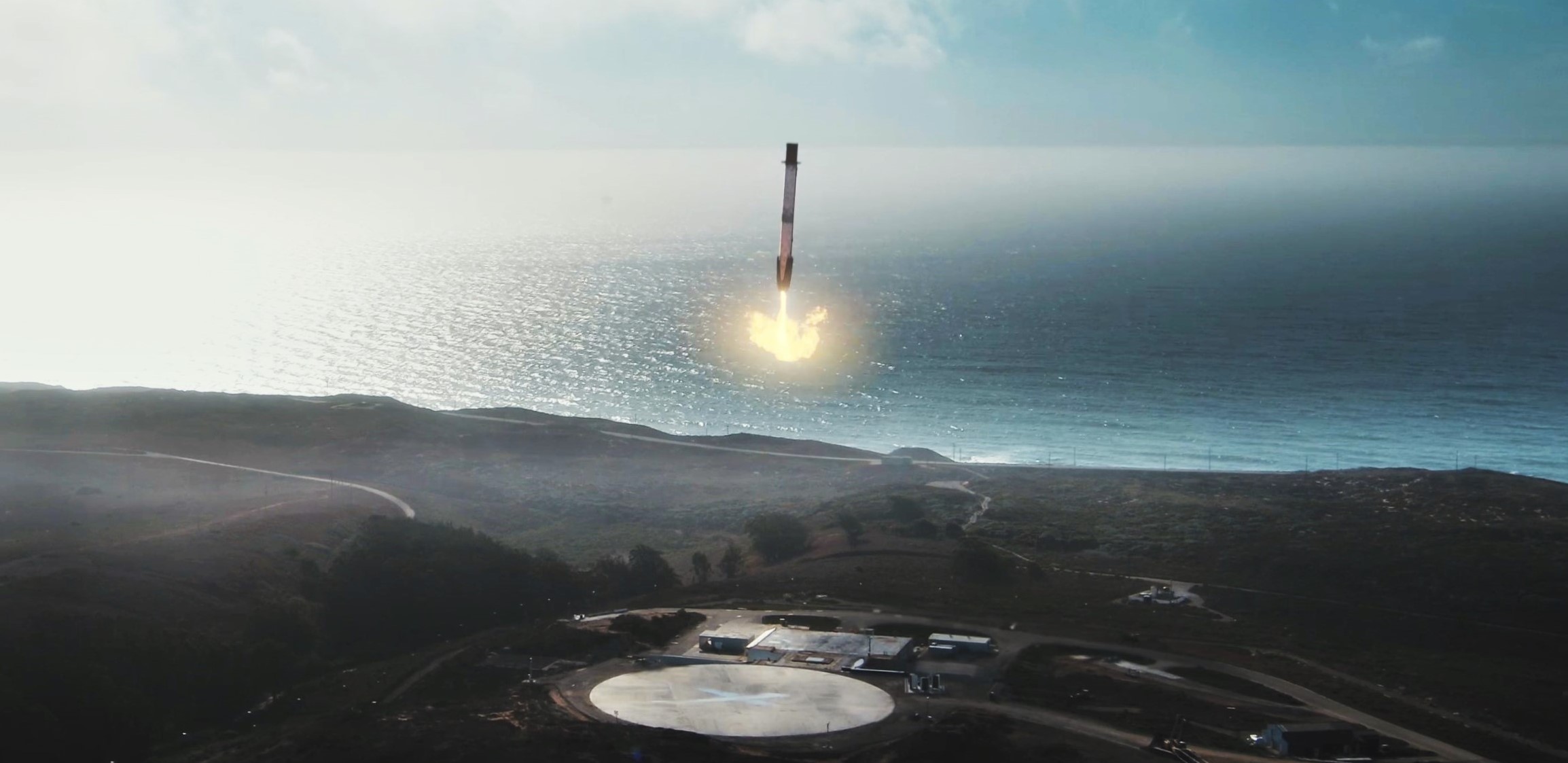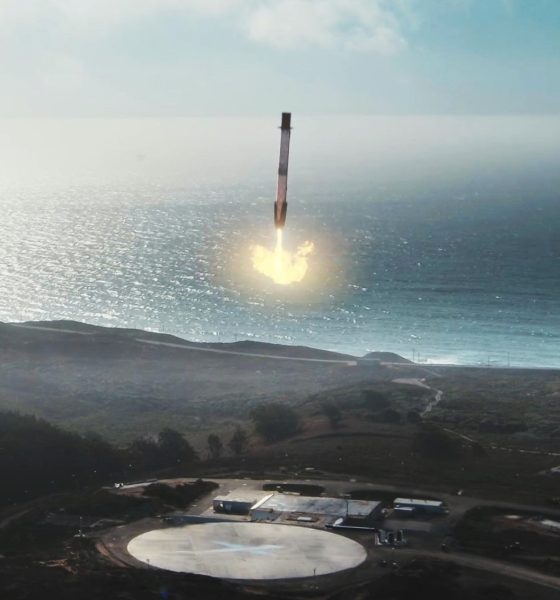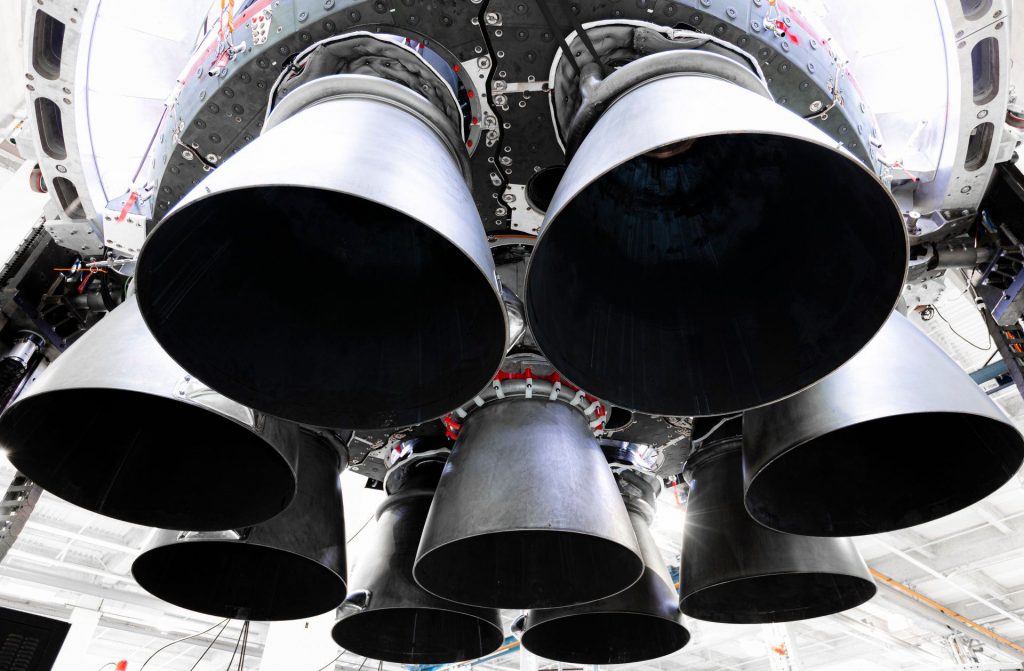

News
SpaceX’s first West Coast rocket launch in 17 months back on track
SpaceX’s first West Coast rocket launch in almost a year and a half is back on track after an October 2nd Falcon 9 launch abort triggered several different delays.
Deemed Sentinel-6A Michael Freilich after the late US oceanographer and former NASA Earth Sciences director, Falcon 9 will launch the ~1500 kg (~3300 lb) spacecraft into low Earth orbit, where it will nominally spend a decade or more precisely measuring the height of the ocean surface to track sea level rise, ocean currents, heat distribution, and more.
Minutes after launch, new Falcon 9 booster B1063 will also attempt to land back at Landing Zone 4 (LZ-4), situated barely a thousand feet away from the launch pad. Sentinel-6A will be SpaceX’s first launch from the West Coast since it orbited Canada’s Radarsat Constellation Mission (RCM) satellite trio in June 2019, as well as SpaceX’s third LZ-4 booster recovery ever.
On October 28th, NASA convened a press conference call to provide an update on an investigation SpaceX and the space agency were conducting into October 2nd’s Falcon 9 launch abort. By then, the company had concluded that the abort had been caused by a slip in quality assurance that allowed improperly cleaned vendor parts to slip through the cracks.
“According to SpaceX vice president of build and flight reliability Hans Koenigsmann, in the course of the rapid and complex mechanical and electrical ballet preceding Falcon 9 first stage ignition, the rocket’s autonomous flight computer observed that two of the GPS III SV04 booster’s nine Merlin 1D engines appeared to be running ahead of schedule, so to speak. The computer immediately halted the ignition process to avoid what could have otherwise been a “hard” (i.e. stressful or damaging) start. SpaceX quickly began inspecting the rocket within 24 hours but was unable to detect anything physically or electrically wrong with Falcon 9’s Merlin 1D engines and engine section.
Out of an abundance of caution, SpaceX removed both misbehaving engines and shipped them to its McGregor, Texas development and test facilities where – somewhat miraculously – the same premature startup behavior was replicated on the test stand. After a great deal of increasingly granular inspections, SpaceX finally narrowed the likely cause down to a tiny plumbing line feeding one of the engine’s gas generator relief valves. In a seemingly random subset of relatively new Merlin 1D engines, SpaceX eventually discovered that a supplier-provided relief valve line was sometimes clogged by a protective lacquer Koenigsmann likened to “red nail polish.
When SpaceX uncovered the possible cause and cleaned out the blocked plumbing, each previously affected Merlin 1D engine performed perfectly, all but directly confirming both the cause and the cure for Falcon 9’s October 2nd abort.”
Teslarati.com — October 29th, 2020

As part of the investigation, SpaceX traced similar bad behavior back to engines on more than just the Falcon 9 booster (B1062) involved in the GPS III SV04 launch abort, ultimately impacting both Falcon 9 booster B1061 – assigned to launch four NASA astronauts to the ISS – and B1063 – assigned to launch Sentinel-6A.
Per Kathy Lueders, NASA’s Associate Administrator of the Human Exploration and Operations Mission Directorate (HEOMD), SpaceX has ultimately decided to replace two of the Sentinel-6A booster’s nine Merlin 1D engines out of an abundance of caution. Formerly scheduled to launch no earlier than (NET) November 10th, the new Falcon 9 rocket is now tracking towards its first Sentinel-6A launch attempt on Saturday, November 21st.
Check out Teslarati’s Marketplace! We offer Tesla accessories, including for the Tesla Cybertruck and Tesla Model 3.

News
Tesla FSD fleet is nearing 7 billion total miles, including 2.5 billion city miles
As can be seen on Tesla’s official FSD webpage, vehicles equipped with the system have now navigated over 6.99 billion miles.

Tesla’s Full Self-Driving (Supervised) fleet is closing in on almost 7 billion total miles driven, as per data posted by the company on its official FSD webpage.
These figures hint at the massive scale of data fueling Tesla’s rapid FSD improvements, which have been quite notable as of late.
FSD mileage milestones
As can be seen on Tesla’s official FSD webpage, vehicles equipped with the system have now navigated over 6.99 billion miles. Tesla owner and avid FSD tester Whole Mars Catalog also shared a screenshot indicating that from the nearly 7 billion miles traveled by the FSD fleet, more than 2.5 billion miles were driven inside cities.
City miles are particularly valuable for complex urban scenarios like unprotected turns, pedestrian interactions, and traffic lights. This is also the difference-maker for FSD, as only complex solutions, such as Waymo’s self-driving taxis, operate similarly on inner-city streets. And even then, incidents such as the San Francisco blackouts have proven challenging for sensor-rich vehicles like Waymos.
Tesla’s data edge
Tesla has a number of advantages in the autonomous vehicle sector, one of which is the size of its fleet and the number of vehicles training FSD on real-world roads. Tesla’s nearly 7 billion FSD miles then allow the company to roll out updates that make its vehicles behave like they are being driven by experienced drivers, even if they are operating on their own.
So notable are Tesla’s improvements to FSD that NVIDIA Director of Robotics Jim Fan, after experiencing FSD v14, noted that the system is the first AI that passes what he described as a “Physical Turing Test.”
“Despite knowing exactly how robot learning works, I still find it magical watching the steering wheel turn by itself. First it feels surreal, next it becomes routine. Then, like the smartphone, taking it away actively hurts. This is how humanity gets rewired and glued to god-like technologies,” Fan wrote in a post on X.
News
Tesla starts showing how FSD will change lives in Europe
Local officials tested the system on narrow country roads and were impressed by FSD’s smooth, human-like driving, with some calling the service a game-changer for everyday life in areas that are far from urban centers.

Tesla has launched Europe’s first public shuttle service using Full Self-Driving (Supervised) in the rural Eifelkreis Bitburg-Prüm region of Germany, demonstrating how the technology can restore independence and mobility for people who struggle with limited transport options.
Local officials tested the system on narrow country roads and were impressed by FSD’s smooth, human-like driving, with some calling the service a game-changer for everyday life in areas that are far from urban centers.
Officials see real impact on rural residents
Arzfeld Mayor Johannes Kuhl and District Administrator Andreas Kruppert personally tested the Tesla shuttle service. This allowed them to see just how well FSD navigated winding lanes and rural roads confidently. Kruppert said, “Autonomous driving sounds like science fiction to many, but we simply see here that it works totally well in rural regions too.” Kuhl, for his part, also noted that FSD “feels like a very experienced driver.”
The pilot complements the area’s “Citizen Bus” program, which provides on-demand rides for elderly residents who can no longer drive themselves. Tesla Europe shared a video of a demonstration of the service, highlighting how FSD gives people their freedom back, even in places where public transport is not as prevalent.
What the Ministry for Economic Affairs and Transport says
Rhineland-Palatinate’s Minister Daniela Schmitt supported the project, praising the collaboration that made this “first of its kind in Europe” possible. As per the ministry, the rural rollout for the service shows FSD’s potential beyond major cities, and it delivers tangible benefits like grocery runs, doctor visits, and social connections for isolated residents.
“Reliable and flexible mobility is especially vital in rural areas. With the launch of a shuttle service using self-driving vehicles (FSD supervised) by Tesla in the Eifelkreis Bitburg-Prüm, an innovative pilot project is now getting underway that complements local community bus services. It is the first project of its kind in Europe.
“The result is a real gain for rural mobility: greater accessibility, more flexibility and tangible benefits for everyday life. A strong signal for innovation, cooperation and future-oriented mobility beyond urban centers,” the ministry wrote in a LinkedIn post.
News
Tesla China quietly posts Robotaxi-related job listing
Tesla China is currently seeking a Low Voltage Electrical Engineer to work on circuit board design for the company’s autonomous vehicles.

Tesla has posted a new job listing in Shanghai explicitly tied to its Robotaxi program, fueling speculation that the company is preparing to launch its dedicated autonomous ride-hailing service in China.
As noted in the listing, Tesla China is currently seeking a Low Voltage Electrical Engineer to work on circuit board design for the company’s autonomous vehicles.
Robotaxi-specific role
The listing, which was shared on social media platform X by industry watcher @tslaming, suggested that Tesla China is looking to fill the role urgently. The job listing itself specifically mentions that the person hired for the role will be working on the Low Voltage Hardware team, which would design the circuit boards that would serve as the nervous system of the Robotaxi.
Key tasks for the role, as indicated in the job listing, include collaboration with PCB layout, firmware, mechanical, program management, and validation teams, among other responsibilities. The role is based in Shanghai.
China Robotaxi launch
China represents a massive potential market for robotaxis, with its dense urban centers and supportive policies in select cities. Tesla has limited permission to roll out FSD in the country, though despite this, its vehicles have been hailed as among the best in the market when it comes to autonomous features. So far, at least, it appears that China supports Tesla’s FSD and Robotaxi rollout.
This was hinted at in November, when Tesla brought the Cybercab to the 8th China International Import Expo (CIIE) in Shanghai, marking the first time that the autonomous two-seater was brought to the Asia-Pacific region. The vehicle, despite not having a release date in China, received a significant amount of interest among the event’s attendees.








